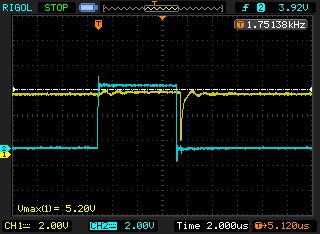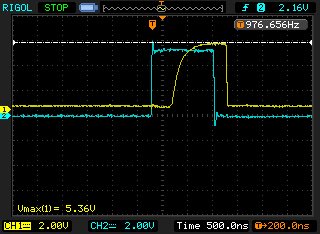I'm looking at the TLC5941 and seeing a pulse on XERR just after the BLANK. In the capture below, yellow is XERR (1k pullup), blue is BLANK. This pulse seems to appear when I raise the current through 16 LEDs 100% duty cycle above about 50mA. Could this be a temperature issue or is it a LOD (likely caused by not enough capacitive decoupling on the LED input)? I am measuring a temperature of 75C on the outside of the package at 60mA. If LOD, what is your suggested decoupling cap types and values? I need XERR to be clean at high currents so I can carefully monitor temperature.

Thanks,
Andrew


 .
.